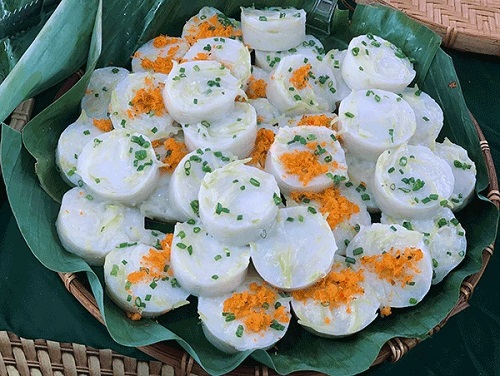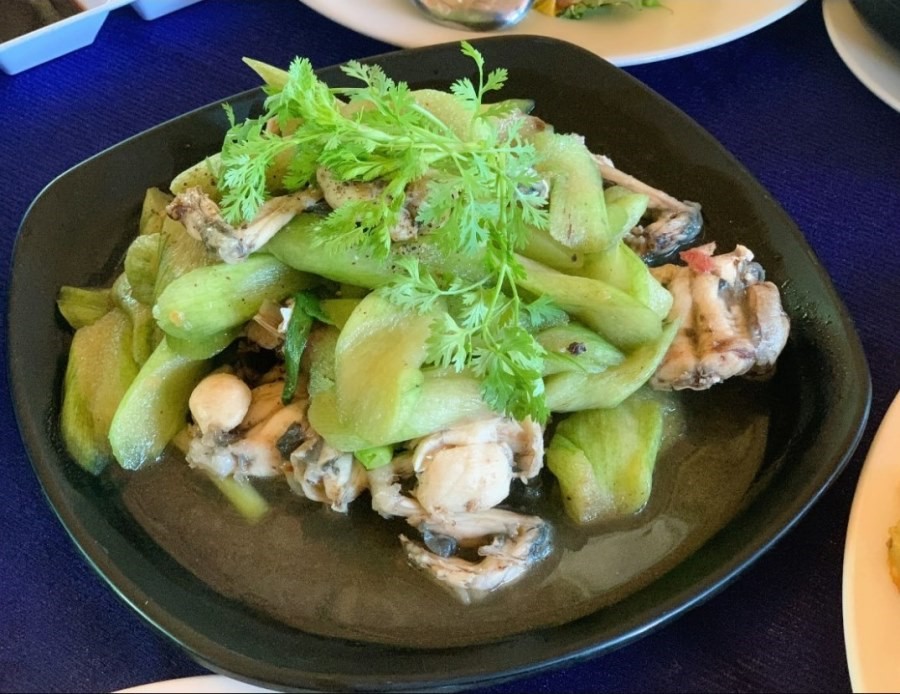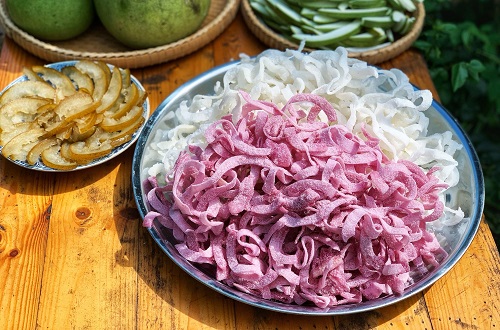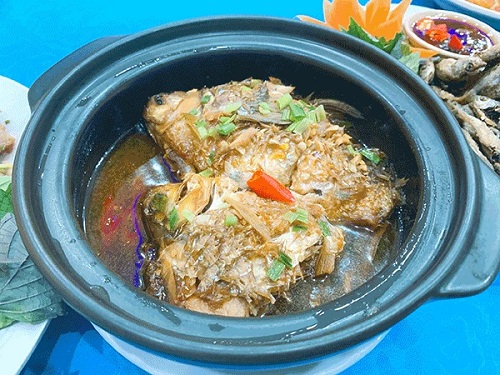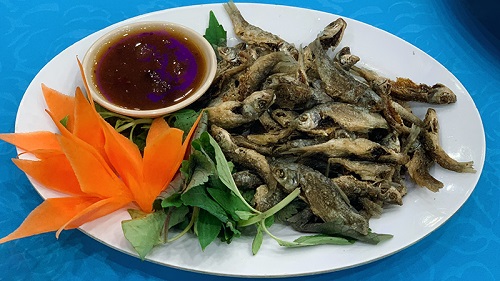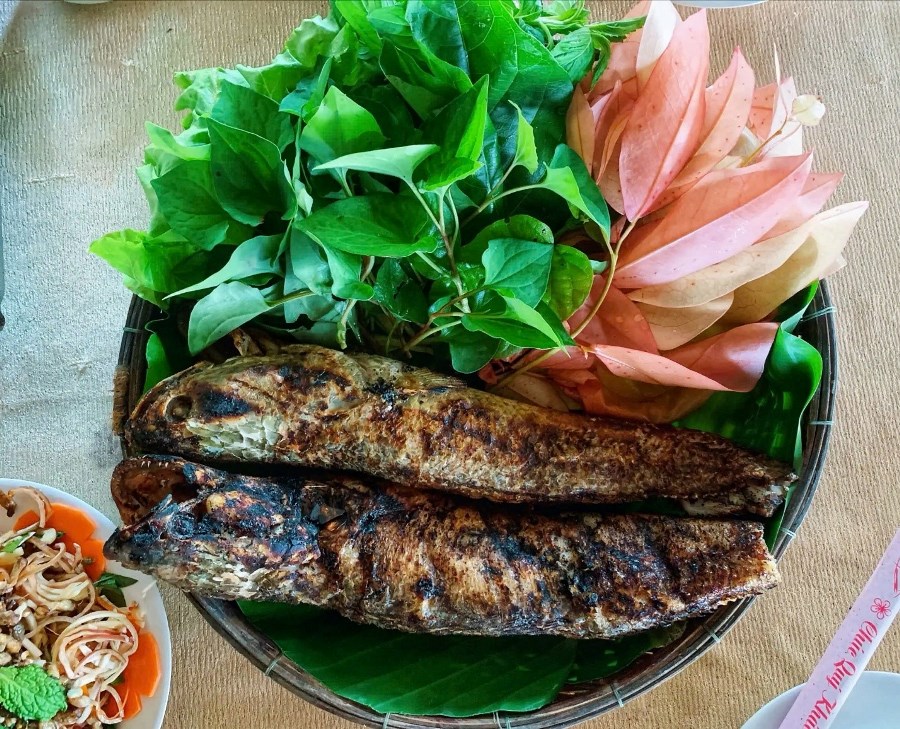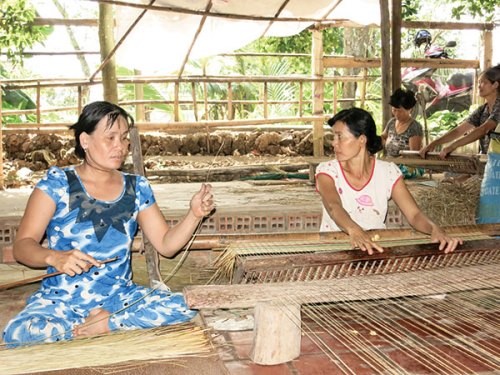
In Vietnam, the artisanal weaving of mats was born so long ago that we no longer know when and who its real father is. According to the legend, in the earlier Le-Ly dynasties (10th-11th centuries), in Hoi village, Tan Le commune, Hung Ha district, Thai Binh province, mat weaving was invented and then developed strongly towards the Later dynasty (15th century). This profession flourished at the time thanks to the first winner of a doctoral competition Pham Don Le (1457-?) resident of Hai Trieu village, Ngu Thiem district, Tan Hung province (current Hung Ha district), Thai Binh province. He grew up in Hoi village when the craft of mat weaving was born there for a very long time. However, the vertical weave frame was without an easel. Visiting China, Pham Don Le found the secret to faster weaving and prettier mats: a horizontal weaving frame with a trestle to make the jute threads taut. He transmitted the experiences and new weaving techniques to the inhabitants and had the weaving frames renovated. The villager named him the Father of the mat weaving craft, Doctor Mats, and built a temple for him after his death (1).
As in other localities, the mat weaving craft in Can Tho has its long history. Many families in Can Tho work with the weaving frame and live well from this trade, several craft villages are therefore formed as in Cai Chanh, Thanh Hoa (Thuong Thanh district, Cai Rang district), Kinh E (Vinh district Thanh)... The craft of mat weaving in Can Tho is passed down from generation to generation, from person to person in direct practice. This craft was imported to Can Tho by immigrants during the 17th-18th centuries. This trade meets the needs of the market with the reliability and beauty of the products: the mats are sold to small shops, market kiosks, merchants in many localities, and street vendors. We decide the payment in cash or in exchange for rice, these modalities are quite well known in Can Tho.
The raw materials are jute and seagrass and freshwater. Freshwater reed gives more durable and beautiful mats. Jute is a wild plant. To be proactive in raw materials, we pull them out and plant them in the mudflats on the banks of rivers and arroyos. 3 months after transplanting, they are harvested while cutting them above the roots: the new plants grow back there for the following harvests. After 2-3 seasons, the burlap stalks become ugly and shorter, so new plants will have to be transplanted. The jute stalks are sorted by length then split and sun-dried 2 or 3 times until thoroughly dry, shaken clean and finally stored in jute granaries. The bulrush is planted from seed on well-dug earth. The harvest of the stems at around 2m will be in 3-4 months from sowing. The bark will be detached into 2 layers: the inner layer of opalescent white and the outer layer, both are to be dried in the sun. The dried inner layer is torn into small threads, this operation was done by hand and now with a small rake. Short wires are connected to long wires and wound into coils. This operation was also done manually and then now with a tool called “rolling table” or “rolling machine”. The outer layer is used to make attachments for oars or hammocks... (2).
Tools for weaving mats are simple and inexpensive: a frame with many parts and other supporting tools. This work requires skill and love for the craft. The two workers must harmonize their movements in order to be able to meet the requirements of the designer.
The mats of Can Tho are particularly those without patterns because the freshwater rush gives thin, white, and shiny fibers. Classic mats are also made for folk religious activities. The classic mats are about 60 cm wide used to cover the beds and altars of worship before presenting offerings. The mat craftsmen also make mats with different patterns such as pawns, checks...in blue, green, purple, yellow, and white colors representing 5 elements (3).
----------
(1) Nguyen Thi Van Hue, Mat weaving craft, http//www.baotangphunu.com. Accessed on 16-3-2022.
(2) Ngoc Anh (2015), Kinh E Mat Weaving Village, Vinh Thanh, Can Tho Journal, 24 tháng 5, p.8.
(3) Documents at Can Tho Museum.
Source: Can Tho News - Translated by Hoang Dat







